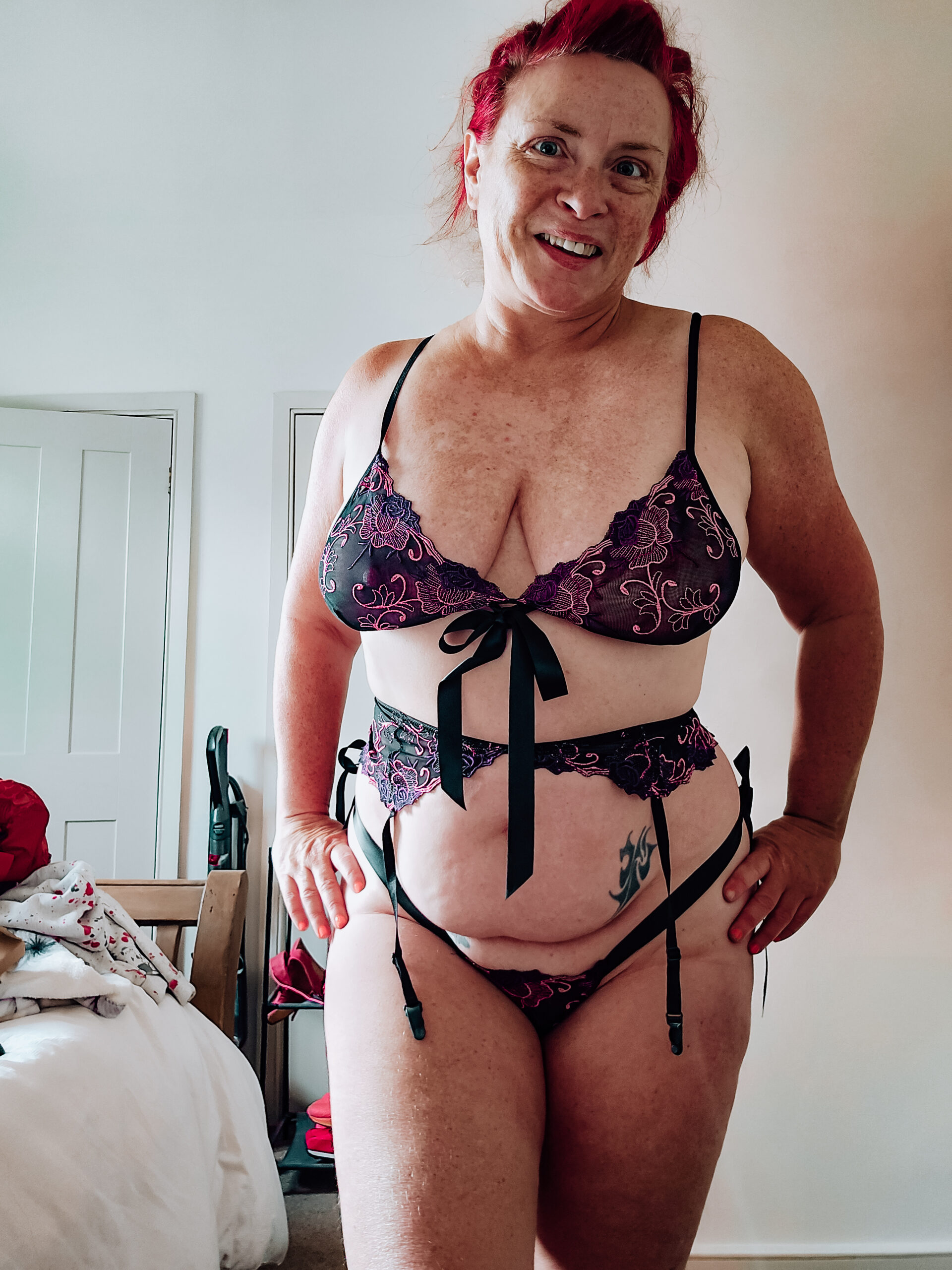Navigating Relationships With Graysexuality: Understanding Low Sexual Desire

Understanding Graysexuality
Graysexuality is a spectrum of sexual orientations where an individual experiences low or fluctuating sexual desire, falling somewhere between exclusively asexual and fully sexual.
Defining Graysexuality
Graysexuality is a spectrum of sexual orientations where an individual experiences low or fluctuating sexual desire. This means that graysexual people may not experience sexual attraction as frequently or intensely as other individuals, but they are also not completely devoid of it. It’s important to remember that sexual desire can vary greatly from person to person and can change over time.
Understanding graysexuality is crucial for creating healthy and fulfilling relationships. It requires open communication and acceptance of individual needs and preferences.
Navigating relationships with a partner who identifies as graysexual may involve adjusting expectations around sexual activity and intimacy. It’s important to prioritize emotional connection, mutual respect, and understanding.
Spectrum of Sexual Desire
Graysexuality is a spectrum of sexual orientations where an individual experiences low or fluctuating sexual desire, falling somewhere between exclusively asexual and fully sexual. This means that graysexual people may not experience sexual attraction as frequently or intensely as other individuals, but they are also not completely devoid of it. It’s important to remember that sexual desire can vary greatly from person to person and can change over time.
Understanding graysexuality is crucial for creating healthy and fulfilling relationships. It requires open communication and acceptance of individual needs and preferences.
Navigating relationships with a partner who identifies as graysexual may involve adjusting expectations around sexual activity and intimacy. It’s important to prioritize emotional connection, mutual respect, and understanding.
Common Misconceptions
Graysexuality is a spectrum of sexual orientations where an individual experiences low or fluctuating sexual desire, falling somewhere between exclusively asexual and fully sexual. This means that graysexual people may not experience sexual attraction as frequently or intensely as other individuals, but they are also not completely devoid of it. It’s important to remember that sexual desire can vary greatly from person to person and can change over time.
Understanding graysexuality is crucial for creating healthy and fulfilling relationships. It requires open communication and acceptance of individual needs and preferences.
Navigating relationships with a partner who identifies as graysexual may involve adjusting expectations around sexual activity and intimacy. It’s important to prioritize emotional connection, mutual respect, and understanding.
Here are some common misconceptions about graysexuality:
- Graysexual people never want to have sex.
- Graysexuality is the same as asexuality.
- Graysexual people can just “get over” their low desire.
- Being graysexual means something is wrong with you.
Communication and Consent in Graysexual Relationships
Navigating relationships where one partner identifies as graysexual requires understanding and communication. Graysexuality is a spectrum of sexual orientation characterized by low or fluctuating sexual desire, existing between asexuality and sexuality on a scale. It’s essential to recognize that this isn’t about a lack of interest in intimacy; it’s about the variation in experiencing and expressing sexual desire.
Open Dialogue about Desires
Open communication is fundamental in any relationship, but it becomes especially crucial when navigating graysexuality. Partners need to honestly and openly discuss their desires, needs, and comfort levels regarding sexual activity. This involves creating a safe space where both individuals feel comfortable expressing themselves without judgment or pressure.
Consent is paramount in all relationships, but it’s particularly important in those involving graysexuality. Because desire levels can fluctuate, ongoing consent throughout the relationship is essential. Partners should regularly check in with each other about their comfort and willingness to engage in various sexual activities. It’s vital that both individuals feel respected and empowered to express their boundaries at any time.
Understanding that sexual desire is a spectrum is key to fostering healthy relationships. One partner may have higher levels of desire than the other, and that’s perfectly okay. The important thing is to find ways to meet each other’s needs and desires in a way that feels comfortable and fulfilling for both individuals.
Exploring alternative forms of intimacy can be beneficial in relationships involving graysexuality. This could include cuddling, kissing, massage, or emotional connection. Focusing on these non-sexual aspects of intimacy can strengthen the bond between partners and create a sense of closeness even when sexual desire is lower.
Respecting Boundaries
Navigating relationships where one partner identifies as graysexual requires understanding and communication. Graysexuality is a spectrum of sexual orientation characterized by low or fluctuating sexual desire, existing between asexuality and sexuality on a scale. It’s essential to recognize that this isn’t about a lack of interest in intimacy; it’s about the variation in experiencing and expressing sexual desire.
Open communication is fundamental in any relationship, but it becomes especially crucial when navigating graysexuality. Partners need to honestly and openly discuss their desires, needs, and comfort levels regarding sexual activity. This involves creating a safe space where both individuals feel comfortable expressing themselves without judgment or pressure.
Consent is paramount in all relationships, but it’s particularly important in those involving graysexuality. Because desire levels can fluctuate, ongoing consent throughout the relationship is essential. Partners should regularly check in with each other about their comfort and willingness to engage in various sexual activities. It’s vital that both individuals feel respected and empowered to express their boundaries at any time.
Understanding that sexual desire is a spectrum is key to fostering healthy relationships. One partner may have higher levels of desire than the other, and that’s perfectly okay. The important thing is to find ways to meet each other’s needs and desires in a way that feels comfortable and fulfilling for both individuals.
Exploring alternative forms of intimacy can be beneficial in relationships involving graysexuality. This could include cuddling, kissing, massage, or emotional connection. Focusing on these non-sexual aspects of intimacy can strengthen the bond between partners and create a sense of closeness even when sexual desire is lower.
Negotiating Sexual Activities
Navigating relationships with a partner who identifies as graysexual requires understanding and communication. Graysexuality is a spectrum of sexual orientation characterized by low or fluctuating sexual desire, existing between asexuality and sexuality on a scale. It’s essential to recognize that this isn’t about a lack of interest in intimacy; it’s about the variation in experiencing and expressing sexual desire.
Open communication is fundamental in any relationship, but it becomes especially crucial when navigating graysexuality. Partners need to honestly and openly discuss their desires, needs, and comfort levels regarding sexual activity. This involves creating a safe space where both individuals feel comfortable expressing themselves without judgment or pressure.
Consent is paramount in all relationships, but it’s particularly important in those involving graysexuality. Because desire levels can fluctuate, ongoing consent throughout the relationship is essential. Partners should regularly check in with each other about their comfort and willingness to engage in various sexual activities. It’s vital that both individuals feel respected and empowered to express their boundaries at any time.

Understanding that sexual desire is a spectrum is key to fostering healthy relationships. One partner may have higher levels of desire than the other, and that’s perfectly okay. The important thing is to find ways to meet each other’s needs and desires in a way dp vibrator that feels comfortable and fulfilling for both individuals.
Exploring alternative forms of intimacy can be beneficial in relationships involving graysexuality. This could include cuddling, kissing, massage, or emotional connection. Focusing on these non-sexual aspects of intimacy can strengthen the bond between partners and create a sense of closeness even when sexual desire is lower.
Navigating Social Expectations
Understanding and navigating relationships where one partner identifies as graysexual requires open communication, empathy, and a willingness to learn. Graysexuality, a spectrum of sexual orientation characterized by low or fluctuating sexual desire, challenges traditional notions of intimacy and necessitates a shift in expectations.
Addressing Societal Pressure
Navigating social expectations can be challenging, especially when those expectations don’t align with our own identities or desires. Societal pressures often dictate norms around behavior, appearance, relationships, and even how much we should desire sex. When these pressures clash with an individual’s true self, it can lead to feelings of discomfort, anxiety, and isolation.
Addressing societal pressure starts with self-awareness. Identifying the specific expectations that are causing distress is crucial. Are they related to romantic relationships, career choices, body image, or something else entirely? Once identified, these pressures can be examined more closely.
Challenging these expectations involves questioning their validity. Many societal norms are based on outdated traditions or biases rather than individual needs and well-being. It’s important to remember that we have the right to define our own paths and live authentically, even if it means going against the grain.
Seeking support from like-minded individuals can be invaluable. Connecting with others who understand your struggles can provide a sense of belonging and validation. Support groups, online communities, or trusted friends and family can offer encouragement and practical advice.
Setting boundaries is essential for protecting our emotional well-being. Learning to say “no” to pressures that don’t align with our values can be difficult, but it’s a necessary step in asserting our autonomy and prioritizing our own needs.
Finding Supportive Communities

Navigating social expectations can feel challenging when those expectations don’t align with your personal beliefs or desires. Societal norms often dictate what is considered “normal” behavior, appearance, relationships, and even sexual desire.
It’s important to recognize that you have the right to define your own path and live authentically, even if it means going against these societal pressures. One way to do this is by challenging those expectations. Question their validity and consider whether they truly serve your well-being or are based on outdated traditions or biases.
Finding supportive communities can make a significant difference. Connecting with people who understand your experiences and offer encouragement can provide a sense of belonging and validation. This could involve joining support groups, online communities, or seeking out trusted friends and family members who are accepting and understanding. Remember that you don’t have to navigate this alone.
Self-Acceptance and Well-being
Self-acceptance is a cornerstone of well-being, particularly when navigating complex relationships like those involving graysexuality. Understanding and embracing your own sexual identity and desires, regardless of whether they align with societal norms, is crucial for building healthy and fulfilling connections.
Embracing Individuality
Navigating social expectations can feel challenging when those expectations don’t align with your personal beliefs or desires. Societal norms often dictate what is considered “normal” behavior, appearance, relationships, and even sexual desire.
It’s important to recognize that you have the right to define your own path and live authentically, even if it means going against these societal pressures. One way to do this is by challenging those expectations. Question their validity and consider whether they truly serve your well-being or are based on outdated traditions or biases.
Finding supportive communities can make a significant difference. Connecting with people who understand your experiences and offer encouragement can provide a sense of belonging and validation. This could involve joining support groups, online communities, or seeking out trusted friends and family members who are accepting and understanding. Remember that you don’t have to navigate this alone.
Self-acceptance is a cornerstone of well-being, particularly when navigating complex relationships like those involving graysexuality. Understanding and embracing your own sexual identity and desires, regardless of whether they align with societal norms, is crucial for building healthy and fulfilling connections.
Managing Internalized Stigma
Managing internalized stigma associated with graysexuality involves recognizing these harmful beliefs and actively challenging them. Start by identifying the specific negative thoughts or feelings you have about your own sexuality. Are you feeling ashamed, inadequate, or worried about being judged?

Once you’ve identified these internalized messages, it’s important to challenge their validity. Ask yourself: Where did these beliefs come from? Are they based on facts or societal stereotypes? Remember that your sexual identity is valid and worthy of acceptance, regardless of whether it conforms to societal norms.
Surrounding yourself with supportive individuals who understand and accept graysexuality can make a huge difference. Connecting with other graysexual people through online communities, support groups, or even just trusted friends can provide validation and encouragement. Sharing your experiences and hearing from others who have overcome similar challenges can be incredibly empowering.
Educating yourself about graysexuality can also help you combat internalized stigma. Learning more about the spectrum of sexual orientations and understanding that diverse experiences are normal can broaden your perspective and challenge harmful stereotypes.
Practicing self-compassion is crucial for managing internalized stigma. Treat yourself with the same kindness and understanding that you would offer a friend struggling with similar issues. Remember that it’s okay to have challenging thoughts and feelings, but don’t let them define your worth or identity.
Ultimately, managing internalized stigma is a journey, not a destination. It requires ongoing effort, self-reflection, and support from others. However, by taking steps to challenge negative beliefs and embrace your authentic self, you can cultivate greater self-acceptance and well-being.
Seeking Professional Support
Navigating the complexities of graysexuality within relationships necessitates open communication, empathy, and a willingness to learn.
Graysexuality, a spectrum of sexual orientation characterized by low or fluctuating sexual desire, challenges traditional notions of intimacy, demanding a shift in expectations. Partners must strive to understand each other’s needs and desires without judgment. This involves honest conversations about comfort levels, boundaries, and preferences regarding sexual activity.
Remember that ongoing consent is paramount in relationships involving graysexuality. Desire levels can fluctuate, making it crucial for partners to regularly check in with each other about their comfort and willingness to engage in various activities. Both individuals should feel empowered to express their boundaries at any time without fear of pressure or judgment.
Exploring alternative forms of intimacy beyond sexual activity can be beneficial. Cuddling, kissing, massage, emotional connection, and shared experiences can strengthen the bond between partners and foster a sense of closeness even when sexual desire is lower.
Self-acceptance is paramount for both partners in this journey. Understanding and embracing one’s own sexual identity, regardless of societal norms, is essential for building healthy and fulfilling connections.
If you or your partner are struggling to navigate these complexities, seeking professional support from a therapist or counselor specializing in sexuality can provide valuable guidance and support. They can offer tools and strategies for navigating communication challenges, addressing internalized stigma, and fostering a more fulfilling relationship.
See everything covered here
Learn more by reading this blog
- Alluzience Longer Lasting Botox Near Hascombe, Surrey - September 3, 2025
- Will My Boyfriend Notice If I Get Lip Fillers? - June 24, 2025
- What Is The Cost Of Dimpled Chin Treatment In The UK - June 20, 2025
